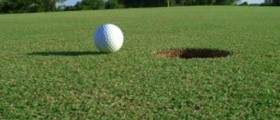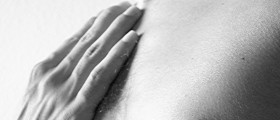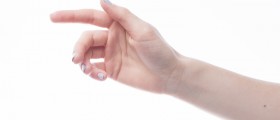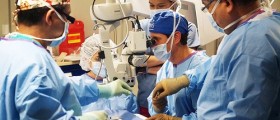
The ulnar nerve is a part of the brachial plexus, a group of nerves that separate from the spine and innervate the entire upper extremity. It runs near the ulna bone, hence the name ulnar nerve. The nerve itself is not properly protected by bony tissue or muscles which makes it rather susceptible to injuries.
What is Ulnar Nerve Compression?
The nerve passes through many tunnels and passages which makes it prone to entrapment. For instance, the very problem may be in the neck (e.g. thoracic outlet syndrome) or is associated with brachial plexus abnormalities. The compression of the nerve usually takes places at the elbow and develops as a result of fractures, growth palate injuries, cubital tunnel problems as well as improper use of the arm, the elbow in particular. The compression per se is a reason why a person experiences numbness and tingling in the ring and small finger. What is more, there is tenderness near the inner bone of the forearm while some individuals additionally report the occasional shock like sensation that spreads down the forearm into the small finger. In severe cases of ulnar compression patients practically become incapable of using their hands because of severe muscle weakness. The muscles become atrophic and the arm may completely lose its function. The whole range of problems becomes even more intensive during the night or if the elbow is included in repetitive Flexing.
It is not a hard task for a well-experienced doctor to confirm the diagnosis of ulnar entrapment. Patient's medical history, physical and neurological exam along with electrical studies are usually sufficient enough. Further treatment is planned by a specialist in neurological disorders.
Hand Surgery to Ease Ulnar Nerve
In the very beginning, once the condition is confirmed, all patients are advised to avoid repetitive strain with the affected arm. They are also prescribed an elbow splint which is supposed to be worn at night. Additional help is obtained from an elbow pad, a type of protective padded gear.
As for medicamentous treatment, most patients receive steroid injections. Even though these may reduce inflammation and bring symptoms under control, pain and other neurological problems easily reoccur.
Surgery is kept as last resort to all patients suffering from ulnar nerve compression in whom conservative treatment is practically ineffective as well as those with recurrent neurological abnormalities associated with malfunction of the nerve. Also, signs of severe compression should be immediately evaluated and surgery may be the first treatment of choice.
There are several different surgical procedures all of which have one thing in common, they strive to release the nerve and allow patients move their arm again without experiencing painful sensation. Surgery also improves strength of the previously weak muscles and prevents their further atrophy.
Simple decompression of the ulnar nerve is performed once the skin covering the nerve is cut (a 1.5-itch incision). The entire compression is released while the nerve remains in its place i.e. it is not manipulated nor is its location changed. This procedure takes approximately 30 minutes and is performed under local anesthesia. Another surgery is simple decompression with epicondylectomy. This approach apart from decompression which is quite similar to the already mentioned one includes removal of the medial epicondyle. Furthermore, some patients undergo subcutaneous transposition when the nerve is initially released an then moved under the skin to the front portion of the elbow. This approach has its flaws since in thin people such repositioning of the nerve actually makes it more vulnerable and susceptible to external trauma. And finally, there is submuscular transposition during which certain muscles in the area are cut and the nerve placed beneath them. The procedure requires general anesthesia and is performed in individuals in whom desirable results have not been achieved with simpler forms of surgical decompression.
As for complications of the surgery, there are relatively rare. Decompression is in general successful, safe and efficient treatment approach. It is estimated that around 1% of all patients develop postoperative infections. They either receive antibiotics or undergo a repeated procedure. Also, one may experience numbness around the incision area. It develops as a consequence of cutting small nerves in the skin. This side effect soon subsides. Additionally, some patients may complain about wound tenderness. This side effects is to be expected and also resolves on its own. On the other hand, in rare instances the very surgery may be blamed for additional damage to the nerve. As a result the function of the structures innervated by the ulnar nerve may be lost for good.
In the end, during the recovery the operated arm should not be used for at least two weeks until the wound completely heals. Physical and occupational therapy are both integral parts of the recovery. The program of physiotherapy lasts for 6 weeks. In the beginning patients exercise three times per week while later, when the arm becomes stronger, exercises are performed on a daily bases, at home, without further supervision of the physical therapist.

















Your thoughts on this
Loading...